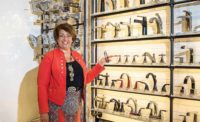Bath & Kitchen Forum: Understanding Your Showroom Customers

However, operating a successful showroom takes more than just a “build it and they will come” attitude. You need to be reasonably certain that your plans and designs appeal to the right audience. A showroom isn't just a place to sell products. It's a place to share new ideas, establish relationships, and leverage partnerships. One of the best ways to do this is to understand who your customers are and what they want.
Today American homeowners are more educated than ever on home design and new product developments. The kitchen and bath are the most frequently remodeled rooms and therefore greatly influence purchase decisions. This means there are a lot of potential consumers who are looking for the right products for their homes. But equally important, the customers are becoming more segmented.
As a showroom operator, you and your salespeople can differentiate your business by keeping on top of what today's consumer wants. To do this, you need to understand the different consumer segments and reach out to them in a targeted, interesting, and effective manner.
Successful showrooms know the clients or customers who come through the doors and meet their needs by anticipating them. How well do you know your showroom customers or your design clients? You shouldn't try to sell a high-end homeowner the same way you would a first-time homebuyer who is remodeling their house. The differences are subtle, but important. At Delta Faucet Co., we break our consumers into segments based on demographics, lifestyle and attitudes. There are two categories of consumers who are particularly interested in the faucets (and other products) sold in wholesale showrooms.
Home Enchancers Vs. Status Seekers
We call these two consumer segments Home Enhancers and Status Seekers. Home Enhancers are primarily Baby Boomers with families who are in or entering their peak earning years. Women exert a strong influence on faucet choices, and they like a variety of finish options and matching accessories. They're very likely to listen to expert advice, including ideas from showroom associates, and they want to achieve a balance between style and functionality. Home Enhancers are the least likely to feel that they can accurately evaluate the quality of their purchases and, as a result, are the most likely to defer to professional advice.Status Seekers, on the other hand, are typically older and wealthier than Home Enhancers. Their household incomes are $100,000 or more. These consumers like the challenge of finding just the right faucet, and they're more likely to pay more for a stylish design when they find it. They're also less likely to worry about ease of installation or price. Status Seekers have been known to replace faucets that are working perfectly just because they want something new. As a group, they are more interested in an experiential relationship with their brand.
You can conduct surveys to determine within which consumer group your showroom customers fall. Questionnaires or even some simple introductory questions or conversation can help you identify someone as a Home Enhancer or Status Seeker. What room are they buying for? Are they just updating the look of the room or doing a full-blown remodel? Is there a contractor or designer they are working with or have they just brought along a friend and a page they pulled out from their favorite remodeling magazine? Do they have children at home or are they planning for a new family? Are they recent empty nesters or buying products for their retirement home? Other questions regarding product specifics can help you determine consumer segments as well. Are functionality, ease of installation and rational purchase decisions even more important than brand to them? Or do they seem to crave an experiential relationship with their brand? Do they like less expensive, run-of-the-mill products? Or are they concerned about exclusivity and defining their own personal style? Are they concerned with value and smart shopping decisions or do they show an interest in premium brand name products and status symbols? The level of information you can obtain about your customers depends on how much time and resources your showroom wants to invest. You can send out questionnaires to your mailing list or ask customers to fill out a profile before a salesperson walks them through the showroom.
Knowing the type of customers you have will put you in a better position to increase your showroom sales and merchandise your products better.
Understanding the expectations your customers bring to bear on the purchase decision is crucial to successful showroom operations. Knowing your customers is just as important as knowing your products. If you know the types of customers and clients you have coming through your doors, you'll know what brands and products to keep in stock. In addition, this will help your salespeople guide the customer to the right products.
By understanding your customers, you'll be able to maximize the manner in which you display products to appeal to their distinct interests. The value of knowing who your customer is and what drives their decisions cannot be overestimated. Knowledge about your buyer is a powerful competitive advantage. <<
- Brian Nobbe, Delta Faucet Co.
Brian Nobbe is director of showrooms at Delta Faucet Co., a wholly owned subsidiary of Masco Corp. He is also the director of product marketing for Delta Faucet Co.'s premium brand, Brizo. For more information about Delta Faucet, visit www.deltafaucet.com or call 800-345-DELTA. For more information on Brizo, visit www.brizofaucet.com.
Looking for a reprint of this article?
From high-res PDFs to custom plaques, order your copy today!




